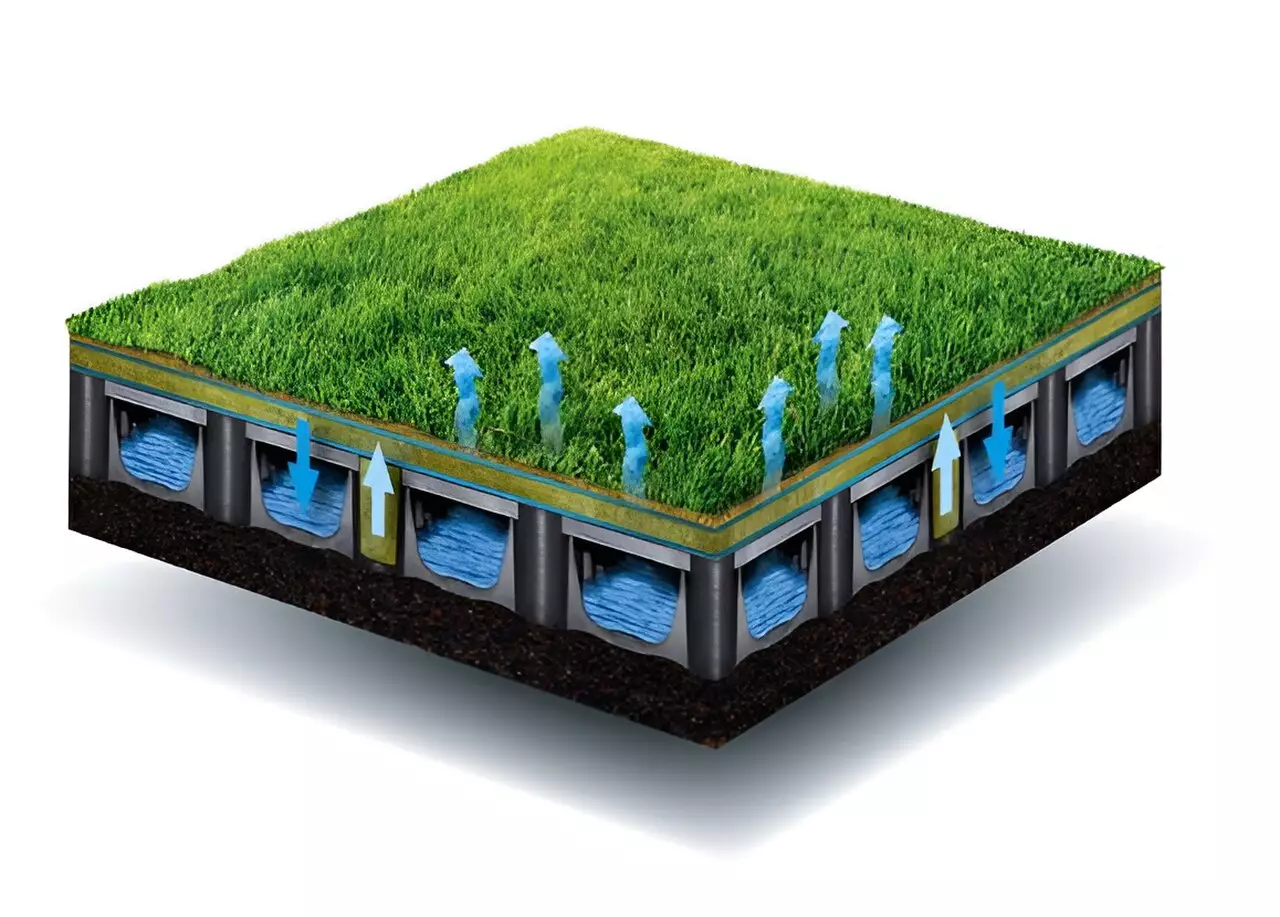Living in urban areas often means limited space for outdoor sports activities. To combat this issue, many cities have turned to artificial turf as a more durable alternative to natural grass in parks and sports fields. However, while artificial turf may allow for heavy consecutive use, it comes with its own set of downsides. Recently, scientists in the Netherlands have proposed a solution to this problem by integrating a subsurface water storage and capillary irrigation system under artificial turf sports fields.
Dr. Marjolein van Huijgevoort, a hydrologist at KWR Water Research Institute, and her team have developed a system that includes an open water storage layer directly beneath the artificial turf and shockpad. This storage layer is designed to retain rainwater, which is then transported back up to the surface through cylinders where it evaporates. The process of evaporative cooling and capillary rise is controlled by natural processes and weather conditions, ensuring that water only evaporates when there is a demand for cooling.
The integration of the subsurface water storage system in artificial turf sports fields has shown significant benefits. One of the most notable advantages is the reduction in surface temperatures compared to conventional artificial turf fields. On particularly hot days, the self-cooling turf can maintain surface temperatures as low as 37°C, which is only slightly higher than natural grass. This is a vast improvement compared to the 70°C temperatures that conventional artificial turf can reach, which can be dangerous and lead to heat-related illnesses.
In addition to providing a safer playing surface, the cooling turf also has positive environmental impacts. By storing rainwater, the field’s retention capacity reduces stormwater drainage and helps mitigate urban flooding. Furthermore, the ability to add extra water to the system during dry periods or water it like natural grass makes it a sustainable option for urban areas.
While the cooling turf system offers many benefits, there are challenges to consider. The installation costs can be up to twice as expensive as conventional artificial turf, which may deter some cities from investing in this technology. A full-scale cost-benefit analysis is needed to determine the true value of the system. Further research is also required to understand how the cooling turf could impact the surrounding area and cities as a whole, especially in different climates.
Despite the challenges, the initial results of integrating a subsurface water storage system in artificial turf sports fields are promising. The system offers a safe and sustainable playing surface that combines the advantages of both artificial turf and natural grass. As urban areas continue to grow, providing sport and play facilities like the cooling turf becomes increasingly important for the well-being of residents, especially children. Further research and investment are needed to fully realize the potential of this innovative technology.


Leave a Reply